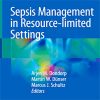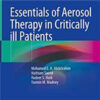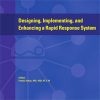Loss of Sphingosine 1-Phosphate in Septic Shock is Predominantly Caused by Decreased Levels of HDL
jintensivecare.biomedcentral.comSphingosine 1-phosphate (S1P) is a signaling lipid essential in regulating processes involved in sepsis pathophysiology, including endothelial permeability and vascular tone. Serum S1P is progressively reduced in sepsis patients with increasing severity. S1P function depends on binding to its carriers: serum albumin (SA) and high-density lipoproteins (HDL). Reduced plasma S1P was associated with sepsis-induced organ failure. A constant plasma S1P level during the acute phase after surgery was maintained with increased HDL-S1P and decreased SA-S1P, suggesting the redistribution of plasma S1P from SA to HDL. The decrease of plasma S1P levels in patients with increasing sepsis severity was mainly caused by decreasing HDL and HDL-S1P. Therefore, strategies to reconstitute HDL-S1P rather than SA-S1P should be considered for sepsis patients. Plasma S1P levels significantly decreased with sepsis severity and showed a strong negative correlation with increased organ failure, quantified by the Sequential Organ Failure Assessment (SOFA) score.

















